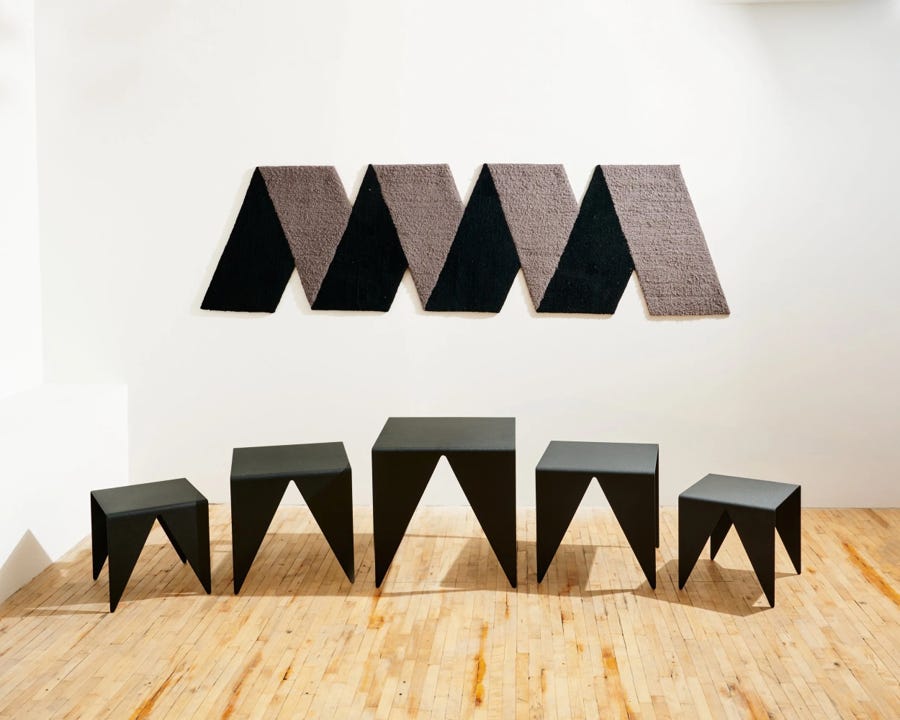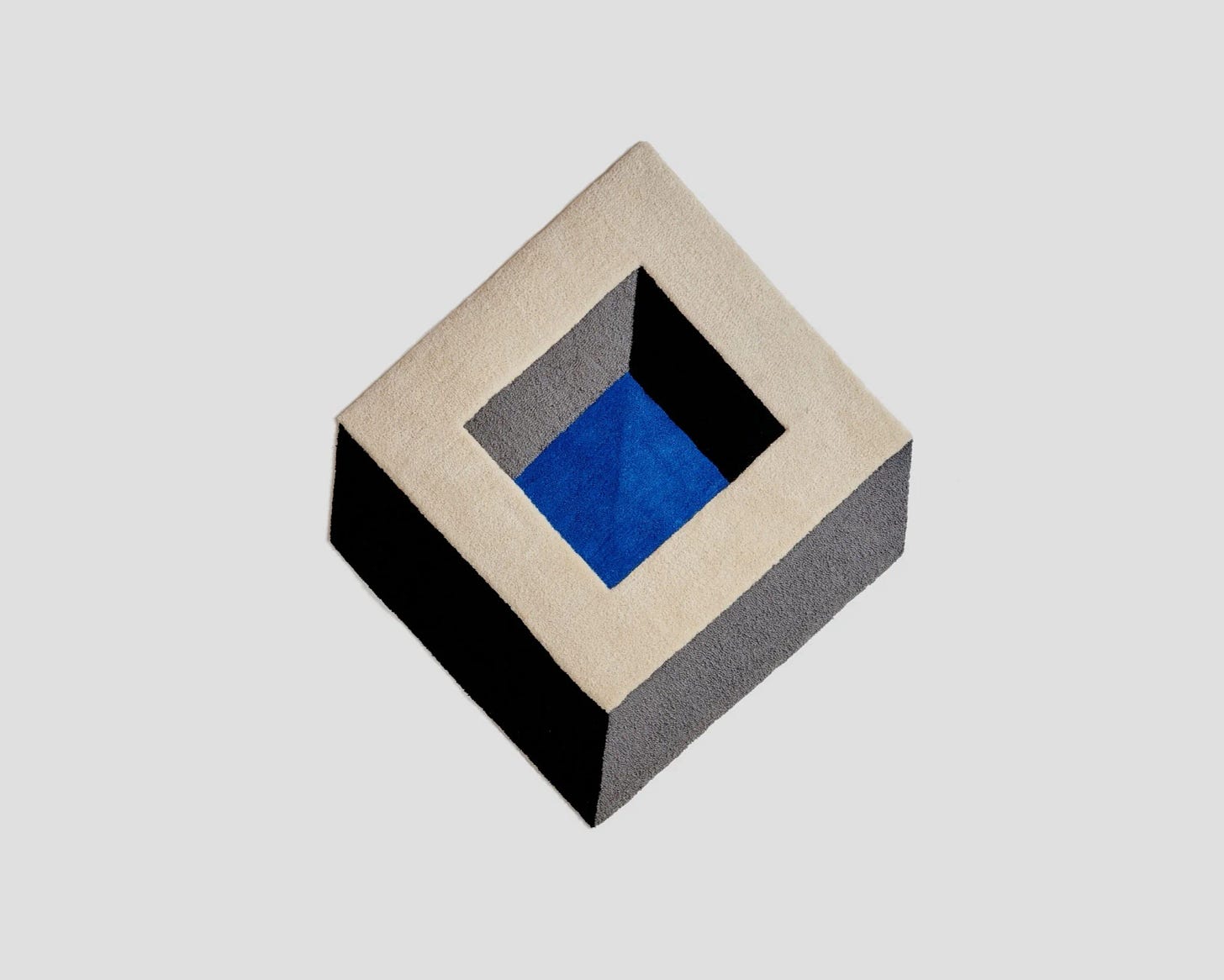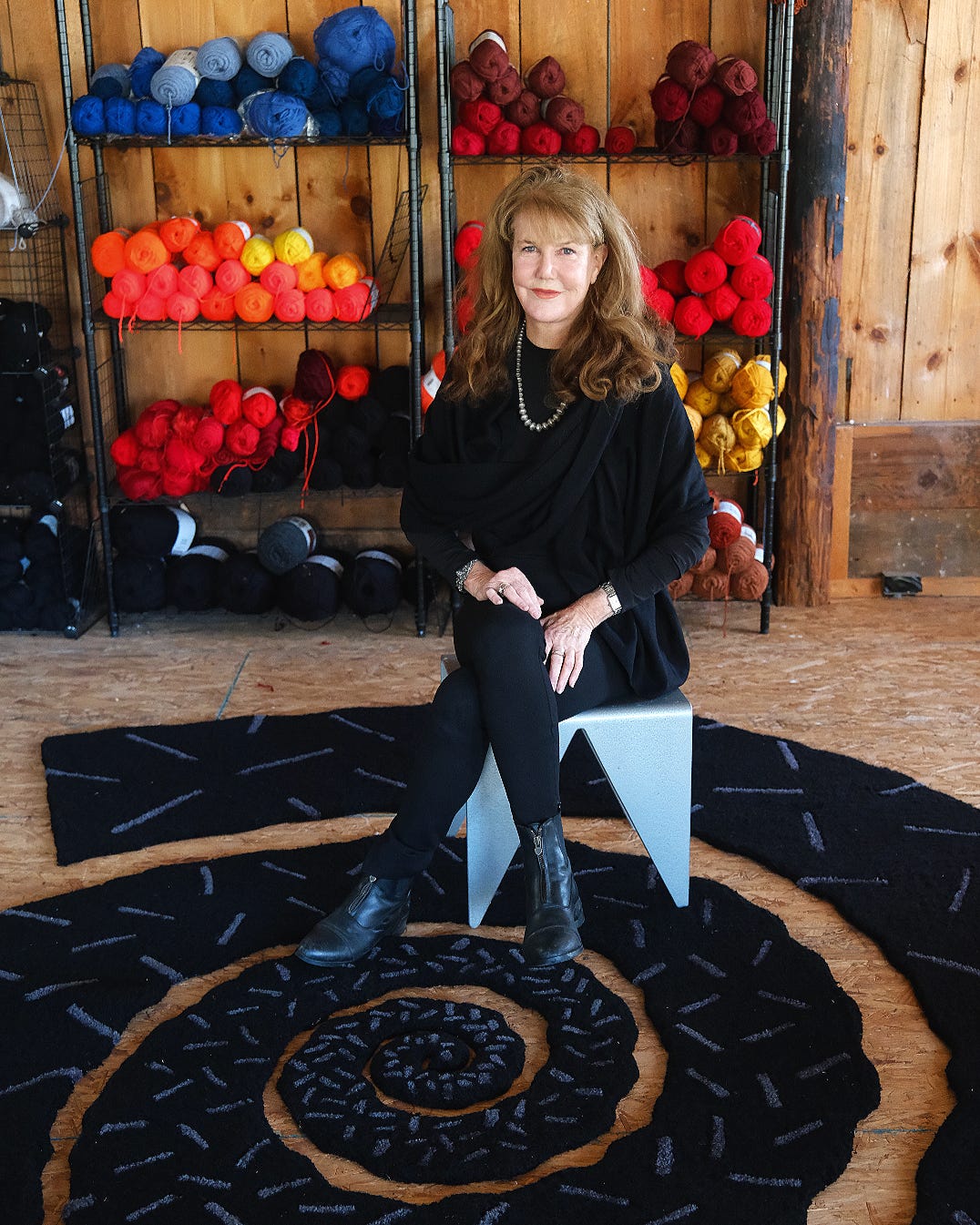RE/CONSTRUCT
Elizabeth Browning Jackson
Elizabeth Browning Jackson had a thriving career. In the 1980s she worked in New York as a member of a collective (or movement) of artists concentrated around the gallery Art et Industrie, founded by Rick Kaufmann. It was the era of punk, hip-hop, and graffiti, and she created unorthodox furniture and rugs that would reflect the freedom and spirit of that age. She exhibited widely in the United States and internationally in Paris and Tokyo, but then she left the avant-garde hub and moved back to her hometown of Providence, Rhode Island, where she started a family and began creating rugs for corporations. That is until four years ago, when she received a phone call from Stephen Markos, the young and ambitious gallerist who founded Superhouse Gallery in Tribeca. “Do you have any furniture left?” he asked her as she recalled the week when opening her first solo show RE/CONSTRUCT at the Gallery.
Focusing on contemporary design, studio craft, and American art furniture of the late 20th century, it is no wonder that Markos proposed that Browning Jackson join his gallery’s program. A graduate from the Rhode Island School of Design and other schools, design has been a part of her upbringing. Her mother studied at the Bauhaus under László Moholy-Nagy and her father’s family was active in the New England textile industry. In the early 1980s, she revolutionized floor coverings by moving “art off the wall and onto the floor,” transforming rugs from static rectangles into playful spirals, splashes, waves, and geometric forms.
The exhibition brings together four of Jackson’s original rug designs from the 1980s with four contemporary reinterpretations, which she calls “reconstructions.” Displayed alongside these rugs are examples of her origami-inspired bent aluminum furniture, also from the 1980s. Cut and folded from flat plates, these pieces mirror the dimensional vitality of her rugs and further highlight her daring graphic sensibility and radical explorations of abstraction across materials. Presented together, the rugs and furniture establish a total environment, continuing Jackson’s vision of immersive scenography where surface, form, and space converge into a singular expression.
Jackson’s shaped rugs broke new ground in the 1980s by giving dimension and sculptural presence to a medium then overlooked. Through varying pile heights, irregular contours, and twisted perspectives, she introduced movement into objects traditionally understood as flat and static. Conceived for the floor rather than the wall, her rugs subverted the monumentality of vertical sculpture and created a more intimate relationship between viewer, object, and ground. By treating fiber as a vehicle for spatial invention, Jackson forged a new design vocabulary that blurred the boundaries between art, craft, and architecture.
In RE/CONSTRUCT, these innovations are carried forward and renewed. In one work, Jackson revisits her monumental ten-foot-diameter spiral rug Spiral (1980), dismantling its swirling form and reassembling the fragments into a bold new composition, Split Spiral (2025), that transforms surface into relief. In another, she reimagines a pleated-shaped rug, heightening its dynamism with a rust-colored corten steel palette that juxtaposes natural and industrial references. These “reconstructions” testify not only to her technical mastery of tufting but also to her persistent drive to reframe the expressive possibilities of the rug.
The exhibition will be on view until December 20th. Photogrphy of installation views by Matthew Gordon for Superhouse Gallery.





